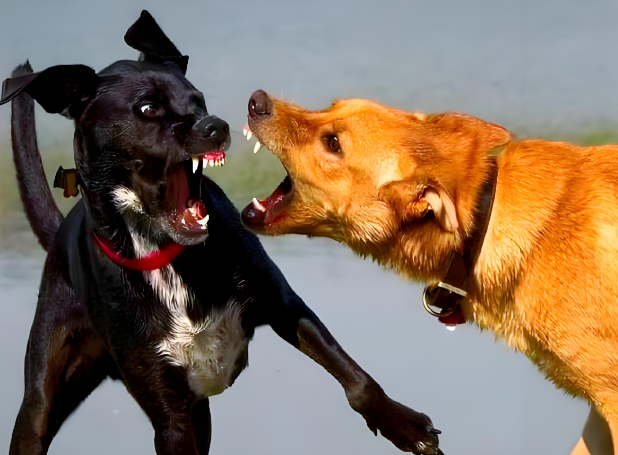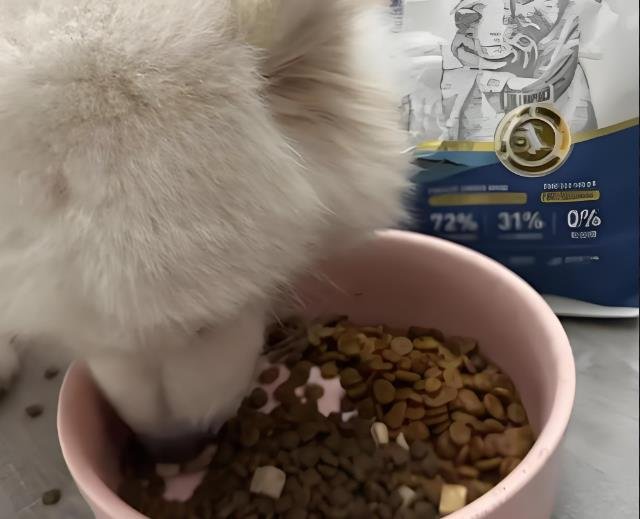Dog fights are terrifying—for you and your pup. But panicking won’t help. This 2025 vet-approved guide breaks down 7 life-saving steps to stabilize your dog, prevent hidden injuries, and get them to safety. Learn what to do now and what never to try.
1. Stop the Chaos Without Becoming a Target
DON’T grab collars or yell—adrenaline makes even friendly dogs bite blindly. Instead:
- Distract: Blast an air horn (keep one in your walk kit!) or dump a bucket of water on the dogs.
- Separate: Use a broomstick or jacket to create a barrier, then lock the aggressor in a closed space.
Pro tip: Carrying citronella spray? A quick mist can break focus without harming the dogs.

2. Secure Your Dog—Even If They “Seem Fine”
Post-fight shock masks injuries. Here’s how to handle a panicked pup:
- Muzzle gently: Use a soft cloth or leash looped around the snout (never force if they’re struggling to breathe).
- Confine safely: A carrier or quiet room prevents escape or further injury.
⚠️ Watch for: Whining, trembling, or dilated pupils—these signal hidden trauma.
3. Scan for Hidden Danger Zones
That tiny puncture? It could tunnel deep into muscle. Check these hotspots:
- Neck/chest: Swelling here can block airways.
- Abdomen: Firmness may mean internal bleeding.
- Leg joints: Limping = possible fractures or ligament tears.
Act fast: Even small wounds need vet care—dog mouths carry Pasteurella bacteria, which causes raging infections within hours.
4. Master Emergency Wound Care
If vet help is >30 mins away:
- Rinse: Use lukewarm water (not hydrogen peroxide—it slows healing).
- Press: Stop bleeding with gauze; elevate the injured area.
- Wrap: Cover with a clean T-shirt or non-stick bandage.
🚫 Never:
- Probe wounds with cotton swabs
- Apply ointments (traps bacteria)
5. Detect Silent Killers: Shock & Internal Damage
Shock signs: Pale gums, rapid heartbeat, cold paws.
Internal injury clues:
- Coughing blood → Lung puncture
- Blood in urine → Bladder trauma
What to do: Keep your dog warm and limit movement—lay them on a blanket for transport.

6. Vet ER Checklist: What to Bring
Speed up treatment with:
- Vaccine records: Rabies status is critical.
- Fight details: Time, attacker’s breed, bite locations.
- Photos: Of wounds pre-cleaning (helps assess contamination).
💡 Ask for:
- X-rays to rule out bone fragments
- Antibiotics like Clavamox (works against bite bacteria)
7. Post-Attack Care: Healing Body & Mind
Physical recovery:
- Change bandages daily; watch for red streaks (infection).
- Use an e-collar—licking = 200x more bacteria.
Emotional rehab:
- Avoid dog parks for 2-3 weeks (reduces fear triggers).
- Try calming supplements (L-theanine or CBD vet blends).
2025 Vet Protocol Updates
- Rabies risk: Even vaccinated dogs need a booster if bitten by an unknown animal.
- Surgical glue: Replaces staples for small wounds (less scarring).
- Lidocaine patches: Non-sedative pain relief for transport.
Final Word
As ER vet Dr. Sarah Koenig says: “The first 60 minutes decide 90% of outcomes.” Stay calm, act smart, and remember—you’re their best chance.
🐾 Share this guide—it might save a furry life tomorrow.


